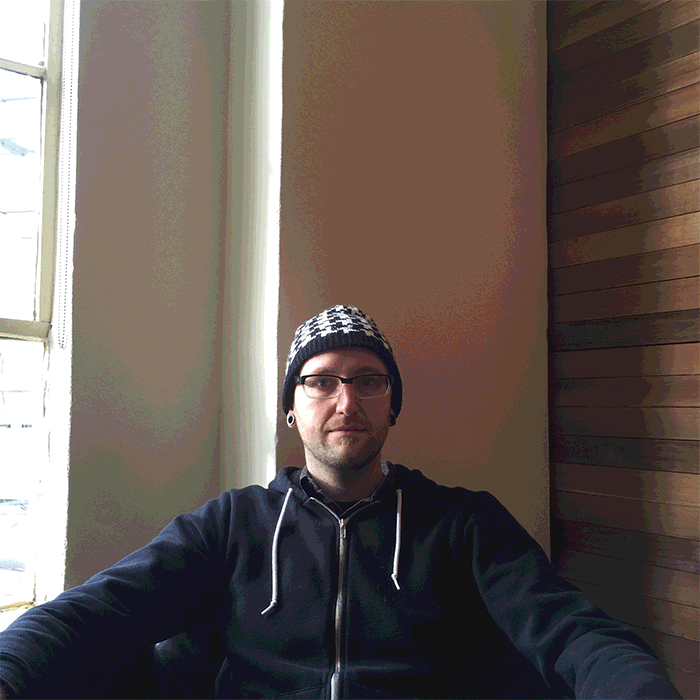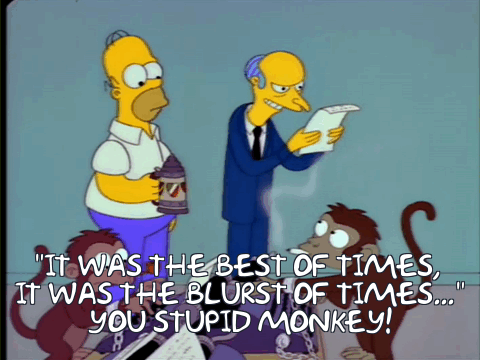Tips & Tricks - Get More out of Wipster
If you're a new user of Wipster or have just missed some of our recent updates, you might have missed some things:--Wipster's suite of integrations...
7 min read
![]() Wipster Content Team
:
Aug 30, 2020 3:26:00 PM
Wipster Content Team
:
Aug 30, 2020 3:26:00 PM

Consider this;
Scientists today know more about our infinite universe than we do about the inner workings of the human brain.
In fact, we know and understand that to reach the “observable” edge of the universe it would take 46.5 billion years travelling at the speed of light.* Yet, we don’t know how information gets coded into our brains or how our brains are able to process and retrieve memories.
Then there’s the question of where consciousness comes from. You know, that little riddle which has perturbed humans since the dawn of civilization.
But this article is not about whether your humanity is or isn’t. Instead, its going to be about something that makes us highly human. Creativity.
More specifically, the psychology of and how you can expand your own creative cognitive skills.
By the time you finish reading this article, you will have gained;
*bonus tip, how to effectively eat media to enhance your creative prowess
Creativity can be defined as such, “relating to or involving the imagination or original ideas, especially in the production of an artistic work.”
In our day to day lives creativity usually goes far beyond the classic definition. We use creativity to problem solve and strategize. It can soothe us when we hum a simple tune or placate our mind with fantasy. It’s the inspiration that tells Elon Musk to build an underground hyperloop or Gordon Ramsey to adjust a piece of parsley a few degrees to the right.
So, for the sake of simplicity, we’ll categorize creativity along the lines of modern psychology as; “...a property of a finished idea or product. An idea is creative if it is both new and adaptive.”*
If you happen to disagree on what the definition of creativity is, we’d love to hear your opinion in the comments below.
There are a few schools of thought on the mental strata of creative thinking.

If only it we're so simple
Divergent thinking is the type of idea generation that is often vivid and spontaneous. Or so it would seem. When you brainstorm ideas that seemingly have no relation to one another this is a form of divergent thinking. Those eureka moments or the free flow of emotion into tangible idea can originate from a divergent thinking process.
Professional improv actors are immensely adept at this, which shouldn’t come as any kind of surprise. In fact, playfulness in youth is considered to be a quality that correlates with strong divergent thinking habits later in life.
A study done by psychologist Nina Lieberman demonstrated how children who were playful, characterized by 5 traits; physical, social and cognitive spontaneity; manifest joy; and sense of humour, were far more likely to be creatively adept thinkers as adults. Many connections have been found between playfulness and creativity.
There are also certain personality types that relate to people who naturally score highly at divergent thinking, they are; nonconformity, curiosity, willingness to take risks, and persistence. Perhaps you have some or all of these traits.

Convergent thinking is the opposite. Where divergent thinking is often immensely intuitive and spontaneous, convergent thinking seeks to follow set rules of logic and commonality. A convergent thinking process is one that leads you to the most ideal and practical path of action.
Let’s say you had a particular problem at hand. For example, you wish to make and eat a peanut butter sandwich but you do not have any peanut butter in the home.
The answer, based on convergent thinking strategy would be. “Well the store has peanut butter, if I go there I can buy it and then make a sandwich.”
A divergent thought path would be something like, “Squirrels love peanuts so I’ll order a ‘squirrels training handbook’ from Amazon, train the squirrels to gather and relinquish their peanuts to me. I’ll press the nuts and have it all spread on toast before noon.”
While one thinking path might seem a lot more fun (especially if you enjoy envisioning a horde of squirrels), both are necessary and important in the implementation of great creative thinking.
Conceptually great creatives will often utilize both skills, initially starting with divergent thinking and later editing and practicalizing along convergent lines. In our day to day work meetings when we assign and build new projects we should look to enable divergent thinking in our brainstorming meeting and continue to optimize the work process through convergence. It helps to look within our work meetings and to think about what the barriers are to great ideas.
Where do great idea’s come from? There’s no simple answer unfortunately, but to better understand it’s important to know how psychologists view the way brain processes information.
One school of thought is the top-down, bottom-up processing model.
Your brain encodes two types of information. Basic information, conveyed to your brain through your body from your senses. “Pan on stove is hot, finger burnt, hot pan is hot” (Bottom-up, as no higher cognitive thought was involved).
Then there are those pieces of information that are encoded in our brains from a top down level. This is where critical, analytical and emotive thought play a role in the process. “Girl breaks heart, Boy is now sad. Girls make hearts sad”.
Often it is emotion that sits in the middle of the process and facilitates the strength of the encoding. From an evolutionary perspective this is a critical part of our survival. We won’t get into that here but let’s just say it’s important to deeply remember the things that can harm us.
What we want to focus on is a basic understanding of how information begins to reside in our minds so we can conceptualize what we create and how it came to be an idea in the first place.
The goal of this gross oversimplification is to help lead to an understanding of where divergent thoughts come from. The truth is, it’s a lot and almost impossible to do justice to in own article but the hidden gem I can give you, is introspection.
The truth is, the majority of creative ideas are not truly spontaneous or original. What is original is the way an idea or object becomes recreated. If you reflect and deeply analyze any truly creative idea you’ve had, you’ll find bits and pieces of the idea are actually built from the culmination of your experiences. This is also known as the priming effect. Often our creative ideas are readily primed from our experiences. This is how the mind conceptualizes solutions for us.
Some of us are naturally more inclined to be aware of the priming effect that generates our ideas, others will have to be more introspective on their idea process.
When you have a new idea, try to ask yourself these questions.
1) Where have I seen parts of this before?
2) What aspect of this idea relates back to my life or my childhood?
3) Did I watch or experience anything in the last 24 hours that is similar to this?
Now you’re probably thinking, “hey, some of my idea’s are out of this world, they’re not rooted in some weird undercurrent of my mind” Here I would challenge you to look deeply at your own creative process. Are your idea’s truly unique, or are they segments and pieces of a vast variety of your experiences carefully stitched together. Even Leonardo Da Vinci and Buckminster Fuller we’re recreating what already was in a new and beautiful way, there’s nothing wrong with that.
The more you ask yourself reflective questions about your idea process the more you will discover the origin of your thoughts. Once you gain a deeper understanding of this, you can then take your creative thinking process to the next level by breaking down the mental barriers.
When you’re planning your next big creative project try to ask yourself the above questions. Sometimes being able to assign the right labels to the common threads with an idea will help you to flush and and create a much more in-depth and full concept.
Lateral Thinking is a term coined by the great Edward De Bono. It’s a deliberate form of thought process that opposes traditional logic in order to generate new and innovative ideas towards a solution. The goal of lateral thinking is idea generation. Finding streams of thought and commonality to a problem or potential solution to spur more and more ideas. It seeks to break mental barriers that obstruct ideas to help you synthesize more. One great technique of lateral thinking is Edward De Bono’s 6 thinking hats.

If you want to learn more about the definition and process of lateral thinking (which I highly recommend you do at some point) you can read about it here.
You need to get 6 hats of the following colors; Blue, White, Red, Black, Yellow & Green.
You can do this independently or as part of a group meeting. You can have multiples of various hats. Each time a specific color hat is being worn, the person wearing the hat commits to a specific type of thought process based on the color.
Here’s what each color hat represents:
Blue – Managing – what is the subject? what are we thinking about? what is the goal? Can look at the big picture.
White – Information – considering purely what information is available, what are the facts?
Red – Emotions – intuitive or instinctive gut reactions or statements of emotional feeling (but not any justification)
Black – Discernment – logic applied to identifying reasons to be cautious and conservative. Practical, realistic.
Yellow – Optimistic response – logic applied to identifying benefits, seeking harmony. Sees the brighter, sunny side of situations.
Green – Creativity – statements of provocation and investigation, seeing where a thought goes. Thinks creatively, outside the box.
*This technique is also especially effective to bring into the office if you have that one person who always gives negative feedback (you know that one who’s always in the “black hat” mode & never puts any sugar in her coffee).
There are lots of good ways to structure a 6 hat’s meeting. You can assign particular people certain colours, you can rotate the hats around as the meeting progresses or you can have as many hats of each colour as you have people and work through each color theme respectively.
There are even coded themes to bring about new ideas. Overall one of the benefits of the thinking hats meeting is that its helps people avoid “Spaghetti thinking” which happens to meetings where one person may have a tendency towards focusing on only the benefits while another may be focused around facts.
There are 4 big obstructors to creativity.

Early in the article we explored the relationship between playfulness and creativity. If you look at each of the 4 obstructors you can see that each one limits the potential of a playful experience.
Surveillance can happen in many work environments or even for remote workers that are required to use logging software. Over emphasis on review can have people feeling locked up by the concept that their work will be judged. Often in a working environment there is no escaping potential judgement, after all people are chasing the mighty dollar. So we push past this in anticipation of the financial payoff our work may generate but the irony is that this payoff can also decrease the intrinsic value of the work itself. Lastly, if we are competing then the opportunity for truly creative insight can become squandered. In these types of situations, people are more likely to take less risk and rely on convergent thinking rather than divergent. Which can be fine, it just may not be as creative.
When a work environment, is open, shared and judgement free, people are able to commit to playing in their work.
From a manager's point of view it’s important to remember to give the right amount of space and freedom to your team. Always use evaluation as a building opportunity. By setting this tone and being consistent with it, teams will be able to handle evaluations without it impacting their creative output.
If you're a new user of Wipster or have just missed some of our recent updates, you might have missed some things:--Wipster's suite of integrations...
We’re excited to announce a powerful new integration that brings Wipster’s intuitive video review tools directly into Final Cut Pro (FCP). Designed ...
1 min read